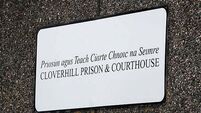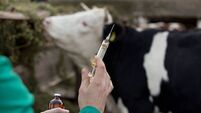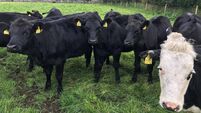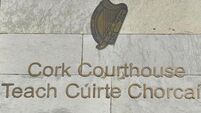All farmers having to plant some trees not worst option

You can lead a farmer to water but you can’t make him drink.
There’s shades of that in the suggestion by Agriculture Minister Michael Creed that all farmers will have to plant a portion of their land with trees, if Ireland is to avoid multimillion-euro fines for greenhouse gas (GHG) emissions.
Despite generous grants for those who plant forestry on their land, the National Afforestation Programme is falling significantly short of targets — more than 20% behind its target last year of planting more than 7,000 hectares.
That’s despite forestry delivering profitability, certainly on marginal land, far ahead of what other farm enterprises would deliver, and providing very valuable rural employment, in planting, thinning, and timber processing.
Every extra hectare of forest would also reduce fines payable to the EU for our carbon dioxide emissions, which we have to reduce by 1m tonnes per year.
Instead, Ireland is increasing emissions at a rate of 2m tonnes per year.
This includes an estimated emissions increase from farming of 2.7% in 2016, largely driven by the dairy industry taking advantage of the end of EU milk quotas.
Emissions from Irish agriculture are set to increase further over the coming decade, unless significant efforts are taken that would mitigate these emissions. Currently, agriculture comprises one-third of Irish GHG emissions.
Mr Creed said farmers have to play their part in climate change measures, and every farmer will have to do more.
He said the alternative is unacceptable, in the sense that whatever resources the State has, he would rather we are pumping them into agriculture rather than paying fines.
The scope is obvious, with Ireland having the lowest forest cover of all European countries, at only 11%.
And the Minister’s reference to greater conditionality on payments from the EU suggests that could be the way governments would try to steer farmers towards more forestry.
As the pressure to reduce emissions intensifies, forestry seems one of the more suitable ways for farmers to play a part.
Other options are more efficient farming, tweaking fertiliser use, capturing more carbon in soils, and production of biomass and biogas to reduce fossil fuel use.
The other big land use option along with forestry is to compel farmers to grow field crops for energy (albeit there is a strong element of this in forestry).
But growing vast annual acreages of crops for burning or fermenting to create energy might not work well in this small country.

This policy is causing problems for farmers in the UK, where anaerobic digestion plants and biomass burners are soaking up forages badly needed for livestock farms after the harsh winter and dry summer.
The risk of feed and bedding shortages is increasing for UK livestock farms, and costs are rocketing, as cereals, maize, grass, and straw are diverted to energy production rather than to livestock.
Farmers in the UK who grow energy crops get the Basic Payment Scheme as well as Renewable Obligation Certificates and Feed in Tariffs, even while livestock farmers go short of forages.
Crops for digesters and burners take land out of food production, unlike renewable energy options such as solar panels and wind turbines, which allow grazing to continue, but which reduce the Basic Payment for UK farmers.
Already, our grasslands and forests soak up carbon dioxide from the atmosphere, offsetting some of our emissions.
Increasing this will enhance our clean green image among our food and drink customers internationally and at home, dispelling any impressions that Ireland’s agri-food sector is not contributing to the national emission reduction obligations.














